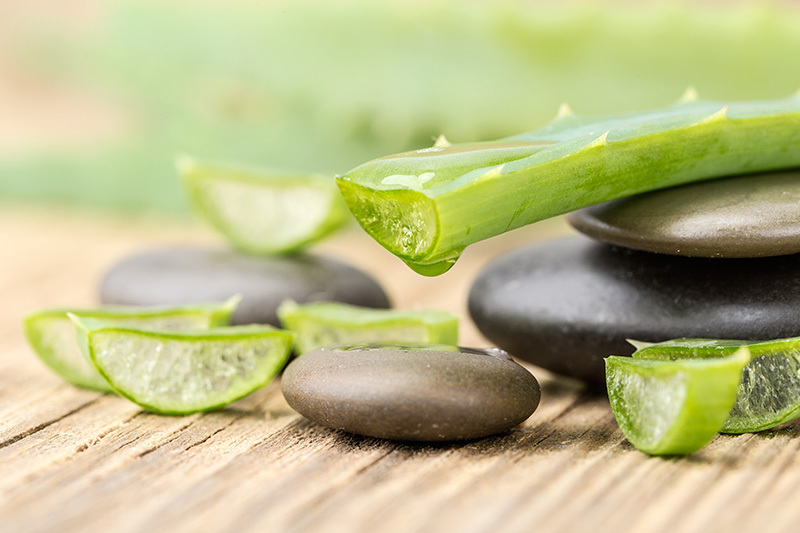Flourish with Orchids: The Ultimate Guide to Masterful Care
Posted on 21/08/2025
Flourish with Orchids: The Ultimate Guide to Masterful Care
Orchids have long been admired for their delicate elegance and breathtaking variety. Yet, despite their exotic beauty, orchids can thrive in homes and gardens worldwide -- if you know how to care for them correctly. This guide on flourishing with orchids will walk you through every essential practice and insider tip, ensuring your orchid plants bloom vibrantly, year after year.
The Allure of Orchids: More Than Just a Pretty Bloom
No flower captures the imagination quite like the orchid. With over 25,000 known species and countless hybrids, orchids offer remarkable shapes, colors, and fragrances. But their value goes deeper than aesthetics.
- Symbolic meanings, from love and luxury to strength and resilience.
- Longevity -- Mature plants can live for decades with proper orchid care.
- Air purification -- Some varieties help purify indoor air, creating healthier living spaces.
With the right approach, caring for orchids becomes far less intimidating, even for beginners!

Understanding Orchid Types: Choosing the Right Variety
Before you dig into orchid plant care, it's crucial to recognize the different types of orchids and select the right variety for your space.
Popular Orchid Species for Home Growers
- Phalaenopsis (Moth Orchid): Beginner-friendly, with long-lasting blooms and adaptable care needs.
- Cattleya: Known for large, fragrant flowers in bold colors.
- Dendrobium: Distinguished by cane-like stems and spectacular, frequent blooms.
- Oncidium (Dancing Lady Orchid): Recognizable by their elegant sprays of small flowers.
- Vanda: Showy, often vividly colored -- requires extra humidity and light.
*Tip: When starting out, choose a Phalaenopsis orchid for your first plant. This variety is forgiving and perfect for learning the basics of orchid maintenance.
Setting Up for Success: Ideal Orchid Environments
Flourishing with orchids begins with recreating their natural habitat. Most orchids are epiphytes, meaning they grow on trees or rocks rather than in soil. Replicating this environment is key to healthy growth.
Light Requirements for Orchids
- Most orchids need bright but indirect light. Direct sunlight can scorch leaves. East or north-facing windows are generally ideal.
- High-light lovers (such as Vanda and Cattleya) may benefit from supplemental grow lights if natural light is insufficient.
-
Signs of too much light: leathery leaves with yellow or red tones.
Signs of too little light: dark green leaves and lack of blooms.
Temperature and Humidity Guidelines
- Most orchids thrive in typical household temperatures: 65-75?F (18-24?C) during the day and 55-65?F (13-18?C) at night.
- Humidity: Ideal levels are 50-70%. Use a humidity tray, room humidifier, or misting to maintain adequate moisture.
- Avoid cold drafts, sudden temperature swings, and hot, dry air from heaters.
Pro Tip: Place orchids in bathrooms or kitchens where humidity is naturally higher.
The Foundation: Orchid Potting Medium and Containers
Unlike normal houseplants, orchids do not grow in regular potting soil. Instead, they prefer well-drained, airy media that mimics tree bark or moss in nature.
Choosing the Right Potting Mix
- Fir bark or pine bark: Classic choice, offers excellent drainage.
- Sphagnum moss: Retains more moisture; ideal for small orchids or dry climates.
- Coconut husk chips, perlite, charcoal, or combinations: Improves aeration and drainage.
Selecting the Perfect Orchid Pot
- Clear plastic pots are popular because they allow you to monitor root health and moisture.
- Clay or terracotta pots breathe better, but can dry out faster.
- Ensure all pots have generous drainage holes -- stagnant water will rot orchid roots.
Masterful Orchid Watering Techniques
Watering orchids is often where mistakes happen. These plants are surprisingly drought-tolerant but **despise overwatering**.
How Often to Water Orchids
- As a rule of thumb, water once a week for most indoor orchids. Allow the potting medium to dry out partially between waterings.
- The "soak and drain" method is best: thoroughly moisten the medium, then allow excess water to run out completely.
- Avoid letting roots sit in water for prolonged periods-- this can quickly lead to root rot.
Watering frequency varies by:
- Potting medium (bark dries faster than moss)
- Room temperature and humidity
- Time of year (less frequent watering in winter)
How to Tell When Your Orchid Needs Water
- Stick your finger into the potting mix -- water when it's slightly dry an inch below the surface.
- Check roots through a clear pot: Plump, green roots are well hydrated; silvery roots are dry and ready for a drink.
Feeding and Fertilizing for Vigorous Orchid Blooms
Orchids need nutrition, but in **moderation**. Over-fertilizing is just as detrimental as neglect.
Best Orchid Fertilizers
- Use a balanced, water-soluble fertilizer (20-20-20 or similar).
- Specialized "orchid fertilizers" are ideal, but generic houseplant food is fine at half-strength.
- Apply fertilizer every 2-4 weeks during active growth. Do not fertilize a dry orchid; always water first.
- Once a month, flush pots with clear water to remove salt build-up and prevent root tip burn.
The Art of Repotting Orchids
Repotting is essential to sustain healthy root systems and prevent disease. Most orchids require repotting every 1-2 years, typically after blooming.
Signs Your Orchid Needs Repotting
- Roots outgrowing the pot or circling inside.
- Potting mix is compacted, sour-smelling, or breaking down.
- Declining blooms or leaf vigor -- often from depleted nutrients or suffocated roots.
How to Repot an Orchid: Step-by-Step
- Remove the plant from its pot and gently shake off old media.
- Trim mushy or dead roots with sterilized scissors.
- Position in a slightly larger pot and fill with fresh orchid mix, tucking roots in gently.
- Water lightly and place in a shaded spot for a week to recover.
Common Orchid Problems and How to Solve Them
Even with masterful care, orchids may encounter issues. Recognizing and addressing them early ensures your plants remain robust and beautiful.
Orchid Pests
- *Spider mites*: Leave fine webbing and stippled leaves. Increase humidity and wipe leaves with soapy water.
- *Mealybugs and scale*: Appear as cottony or shell-like masses on leaves and stems. Remove with cotton swabs dipped in isopropyl alcohol.
Orchid Diseases
- Root and crown rot: Usually from overwatering or poor drainage. Remove affected tissue, repot in fresh medium, and reduce moisture.
- Leaf spots/fungal infections: Remove affected leaves, improve air circulation, and avoid overhead watering.
Blooming Issues
-
Orchid not flowering?
- Insufficient light is the most common cause.
- Check seasonal rest periods -- some varieties need a cooler, drier spell to trigger blooms.
- Excessive fertilizer or inconsistent watering may also delay flowering.
Propagating Your Orchids: Multiply the Magic
Ready to expand your collection or share the joy? Orchid propagation is achievable with a few specific techniques:
Orchid Propagation Methods
- Division: Gently separate large, mature plants with multiple pseudobulbs.
- Keiki (baby orchid): Some orchids produce offshoots--care for these until roots form, then pot individually.
- Backbulbs: Older, leafless bulbs can sometimes be encouraged to sprout new shoots under the right conditions.
Seasonal Orchid Care Checklist
Each season brings unique challenges and opportunities to improve orchid care:
- Spring/Summer: Increase watering, fertilize actively, watch for pests, and adjust humidity as needed.
- Autumn/Winter: Reduce watering frequency, limit feeding, and ensure adequate but safe light. Watch for cold drafts.

Expert Tips for Truly Flourishing Orchids
- *Rotate your orchids*: This ensures even growth and light exposure.
- *Group orchids together* to help maintain bulk humidity but allow air to circulate between pots.
- *Use rainwater or distilled water* if your tap water is mineral-laden; sensitive roots prefer purity.
- *Keep a care journal* to log watering, feeding, repotting, and bloom cycles.
Conclusion: Flourish with Confidence
Flourishing with orchids is a fulfilling journey that rewards patience and observation. With comprehensive orchid care knowledge -- from proper watering, substrate, and lighting, to expert troubleshooting -- your orchids will reward you with exquisite blooms and vibrant growth. Whether you are a budding enthusiast or an experienced grower, remember that orchids are resilient and quick to respond to dedicated care.
Ready to master orchid care? Embrace these tips, keep learning, and watch your spectacular orchid display thrive for years to come!





